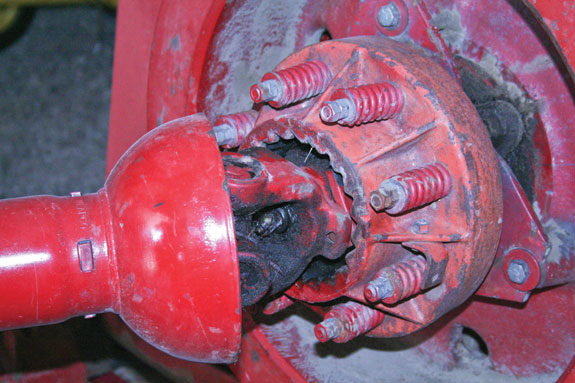When crops were growing and the watering was done and he had a little time in the afternoons, he was working on the combine or baler.
He would work on them before harvest so he didn’t have to stop during harvest. After harvest was done, he would clean them up and make sure they were ready for the next season. He never had down time in the winter.
Kevan Larson at Agri-Service talks about how to get ready for harvest and what producers can do after harvest to minimize down time when the machines are needed most.
“The biggest thing they can do is make sure the machine is cleaned off and then we go out and do a preventative maintenance check. Hopefully we can head off some problems.”
Larson says that many of the problems people come in with could have been avoided with better maintenance. He says the main preventative maintenance points people miss are greasing points, lubrication and simple things like that – although many owners may not know where those points are.
“You have to go through their operator’s manual and familiarize yourself with the lubrication points on the machine you will be running. That should be the first thing you do after you purchase the equipment.”
Some owners hire workers that may not be familiar with the machine and where to put grease or how much. Larson says that some of the owners he works with actually write on the machine with marker how many pumps of grease to apply to a certain point and then have an arrow pointing to the area. That helps with workers that don’t speak English very well, too.
He says that the dealers also are trying to do a better job of helping their customers know more than just how to start the equipment they buy from them.
Owners and operators need to be familiar with how the machine works. They need to have an idea what to do when the computer sounds an alarm.
Your operator can be your number one asset in preventative maintenance because they sit in the seat and they know what their machine is doing.
The operator is the best source of information a mechanic has, sometimes the only source, about what the machine is doing and what happened when it started acting up.
“You may want your mechanic on speed dial,” Larson says. “I like to make myself available all the time for my customers, to help them out when they have questions.”
Larson suggests owners listen to their mechanics when they tell them, or ask them to explain, why a problem might be happening, to avoid problems in the future.
He says that the most common problem with conditioners is checking the spring tension. The older machines have a draw bolt with a tension spring that gets overlooked quite a bit.
The newer ones are a little bit easier to adjust. They have nitrogen accumulators on them. The bearings on conditioners are pretty reliable, providing a big rock doesn’t go through them or something like that.
“Rocks, pipes and irrigation pipes, they’re in the field and it’s hard to avoid them. Some farmers don’t understand when custom harvesters go through their field and complain about how much stuff is in their field, but it’s get expensive if you run over a few rocks.”
Larson says some common problems with balers also can be avoided with some maintenance. Make sure to check the twine box for birds’ nests because they can cause problems when baling.
He says the flywheel brake in the baler can get grass and hay stuck in it and even start fires. This can be avoided by cleaning your baler after each day’s work with a compressor.
Mechanic’s tip: Larson says you can reduce knotter failure on your baler by having a gas-powered leaf blower with you and periodically blowing off the knotter. Ideally you should be blowing off your baler once a day, at least once a week, while in use. This will help keep it clear and working properly. FG
PHOTO
The flywheel brake in the baler can get grass and hay stuck in it and even start fires. This can be avoided by cleaning your baler after each day’s work with a compressor. Photo by Dario Martinez.

- Jim Schlund
- Retired Diesel
Mechanics Professor - College of Southern Idaho










